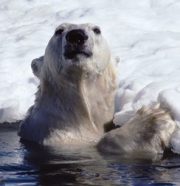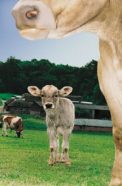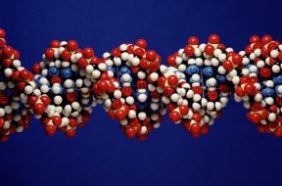Baby swaps, crime scenes, and DNA testing
By looking at animal DNA, investigators are solving crimes and conservationists are helping save endangered species.
By Emily Sohn
Two mothers met near the Arctic Ocean, had a drink, and swapped babies.
For months, the mommas went on living as if nothing had happened. Then, one day, a group of scientists in helicopters swooped down to the ice, did some tests, and revealed the truth. Though shocked by what had happened, the team decided to leave the families alone.
After all, the mothers were polar bears. The baby swap was a mistake. And neither mom seemed to know what had happened.
 |
|
A polar bear surfaces to look for its cub.
|
“It’s a case of mistaken identity,” says biologist Nick Lunn of the Canadian Wildlife Service, who published a study about polar bear adoptions in 2000. “If they knew, I don’t think they would do it.”
You probably know someone who was adopted. People do it all the time. But scientists are finding out that animals sometimes snag each other’s babies, too, often by mistake.
And now, the same biological techniques that scientists use to set the record straight are proving useful for other purposes. By looking at animal DNA—the instruction manual of life—investigators are solving crimes and conservationists are helping keep endangered species from going extinct.
Animal adoption
When adoption happens in the animal kingdom, it usually involves family members. The more closely related two animals are, the more DNA they share. DNA, a molecule in every cell, encodes the genes that help determine who we are. So, by taking care of relatives, animals can pass some of their own genes to the next generation.
But animal adoptions can happen by mistake, too, says Diane Anderson of the Veterinary Genetics Laboratory (VGL) at the University of California, Davis. She has seen sheep, alpacas, and other first-time animal mothers get flustered when giving birth around the same time. Babies sometimes get mixed up in the process.
 |
|
A calf and its mother?
|
“They’re not thinking, ‘Oh, gee, I like that one better than mine,'” Anderson says. “They just get excited. With all the confusion, they can switch babies, and they’ll raise the babies as their own.”
Experts at VGL specialize in matching newborn animals with their true parents. Most of their clients are livestock whose breeds need to be verified before they can be officially registered and sold.
“If you have a cow that’s producing a lot of milk or a show animal that’s winning a lot of money, you want to verify that that animal is coming out of the parents the breeders say it is,” Anderson says. “You want to be sure that you’re getting what you think you’re getting.”
DNA markers
To confirm which babies come from which parents, scientists look at stretches of DNA—genetic material that reads like letters in a sentence. Most of the sentences look exactly the same from individual to individual within the same species and even often between species. But certain stretches of DNA, called markers, tend to look pretty different from one animal or person to another.
 |
|
A piece of a model of a DNA molecule.
|
Everyone’s DNA is a combination of their mother’s and father’s genes. Your markers will match your parents’ markers but will be different from most of your friends’ markers. By sampling DNA from hair, urine, blood, feces, or other body tissues, scientists can use markers to pick apart relationships with more than 99 percent accuracy.
Besides exposing baby swaps, DNA testing can help scientists solve crimes. At VGL, scientists have used saliva on a boy’s arm to identify the dog that bit him. They’ve matched hair from a criminal’s dog to the scene of a bank robbery.
Some situations are even more gruesome.
“One recent suspect stepped in dog poop at the crime scene,” says VGL geneticist and veterinarian Holly Ernest. “He claimed he wasn’t there. Our lab matched the poop on his shoes to the crime scene. He was convicted of a triple murder and sentenced to death.”
Helping endangered species
DNA tests can also have more uplifting consequences. VGL has a wildlife division, where scientists analyze DNA of threatened and endangered animals, such as coyotes, mountain lions, and panthers. By looking at how similar DNA is among individuals in a population, researchers can determine the level of threat to those animals. Then, conservationists can come up with strategies to protect them.
Still, for some species, DNA test results remain just interesting tidbits of information. Polar bears are not endangered at this point, Lunn says, and there’s no big effort to seek additional evidence of baby swaps. “If it were down to the last polar bear on earth and every cub mattered, then it would be a conservation issue,” he says.
Researchers could then figure out how to convince wild mothers to adopt babies bred in captivity on purpose. But for now, every cub is free to follow the parent that cares for it.







